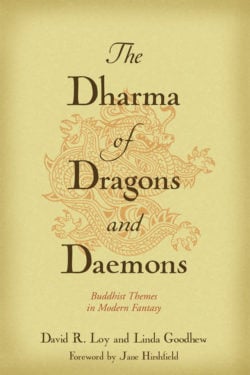Linda Goodhew

Linda Goodhew is a professor of English literature at Gakushuin University in Japan. She lives in Kamakura, Japan.
Books, Courses & Podcasts
The Dharma of Dragons and Daemons
Many books are called groundbreaking, but this one is truly unique and sure to appeal to anyone with an interest in fantasy literature. It employs a Buddhist perspective to appreciate some of the major works of modern fantasy—and uses modern fantasy fiction to elucidate Buddhist teachings. In the tradition of David Loy’s cutting-edge presentation of a Buddhist social theory in The Great Awakening, this pioneering work of Buddhist literary analysis, renown scholar David Loy and Linda Goodhew offer ways of reading modern fantasy-genre fiction that illuminate both the stories themselves, and the universal qualities of Buddhist teachings. Authors examined include J.R.R. Tolkien, Philip Pullman (of The Amber Spyglass trilogy, from whose works the word “daemon” is borrowed in the title), Ursula K. LeGuin, and the anime movie Princess Mononoke.

